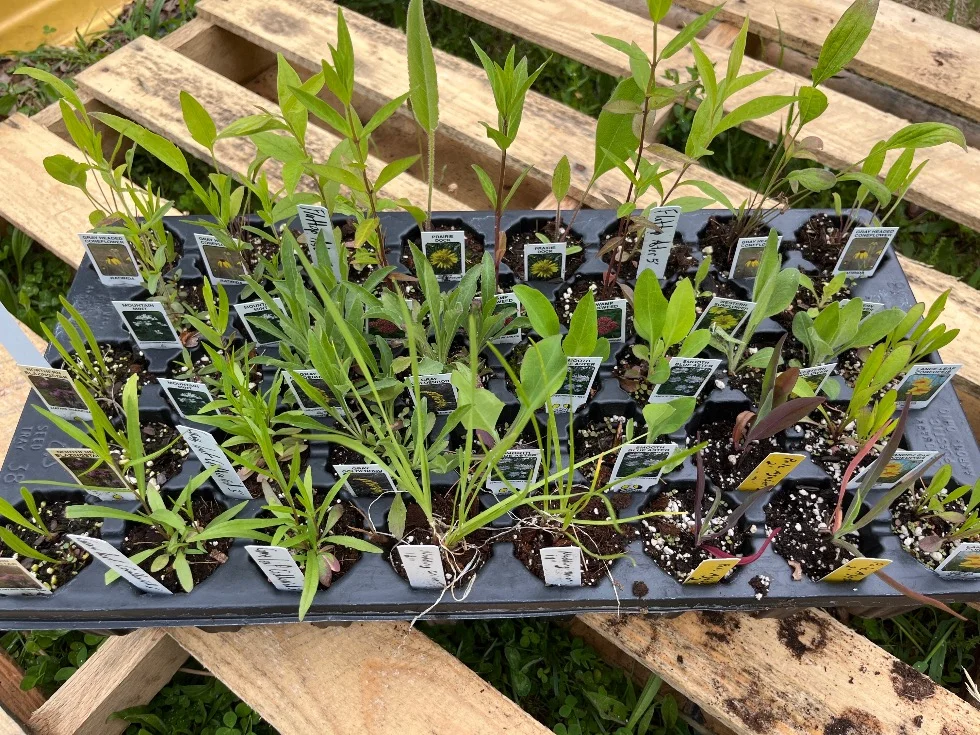Description
Rain garden kits are designed to facilitate the creation of sustainable gardens that manage stormwater runoff effectively while supporting plant growth and biodiversity. These kits typically include plants, materials, and guidance to help homeowners or communities create rain gardens. Here are key components and considerations for rain garden kits:
- Native Plants: The kits include native plants adapted to the local climate and soil conditions. These plants have deep root systems that help absorb excess water, reduce runoff, and filter pollutants.
- Plant Selection: Plants in rain garden kits are chosen for their ability to tolerate both periodic flooding and drought conditions. Examples include:
- Bog sage (Salvia uliginosa): Thrives in moist to wet conditions and attracts pollinators.
- Swamp milkweed (Asclepias incarnata): Provides nectar for butterflies and is tolerant of wet soils.
- Blue flag iris (Iris versicolor): Prefers wet conditions and adds visual appeal with its flowers.
- Design Guidance: Kits often guide the design and sizing of a rain garden based on site conditions, such as slope, soil type, and proximity to runoff sources.
- Mulch and Soil Amendments: Materials like mulch and compost may be included to improve soil structure, retain moisture, and enhance plant growth.
- Educational Resources: Kits may come with educational materials on rain garden benefits, maintenance practices, and managing stormwater runoff.
- Installation Instructions: Step-by-step instructions on preparing the site, planting, and maintaining the rain garden ensure successful establishment and long-term performance.
- Permits and Regulations: This section provides information on local regulations and permits for installing rain gardens, especially in areas with strict stormwater management requirements.
- Community Engagement: Some kits encourage community involvement through workshops, volunteer opportunities, or educational events to promote awareness and adoption of rain gardens.
- Pollinator and Wildlife Habitat: Rain gardens attract pollinators and provide habitat for wildlife, enhancing biodiversity in urban and suburban landscapes.
- Maintenance Guidelines: Guidance on watering, weeding, and seasonal care ensures the rain garden remains healthy and effectively manages stormwater over time.






Adeyemi –
As a homeowner interested in sustainable landscaping, this rain garden kit has been an invaluable resource. The digital service provided comprehensive information on plant selection, placement, and maintenance, empowering me to create a functional rain garden that benefits both my property and the environment. Highly recommend.
Chibuzor –
I’m impressed with the effectiveness of this rain garden kit in managing stormwater runoff. The plants included are not only beautiful but also environmentally beneficial, attracting pollinators and improving soil health. It’s a fantastic solution for anyone looking to reduce their environmental footprint and enhance their property’s aesthetics.
Chibueze –
This rain garden kit has completely transformed my yard. The selection of plants is perfect for managing water runoff and creating a beautiful, sustainable landscape. The digital instructions were clear and easy to follow, making installation a breeze. I’m thrilled with how effective and eco-friendly my garden now is.